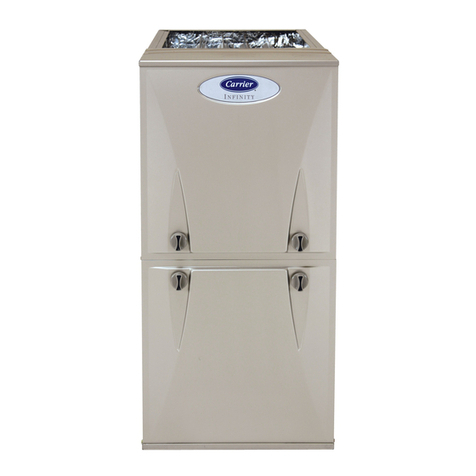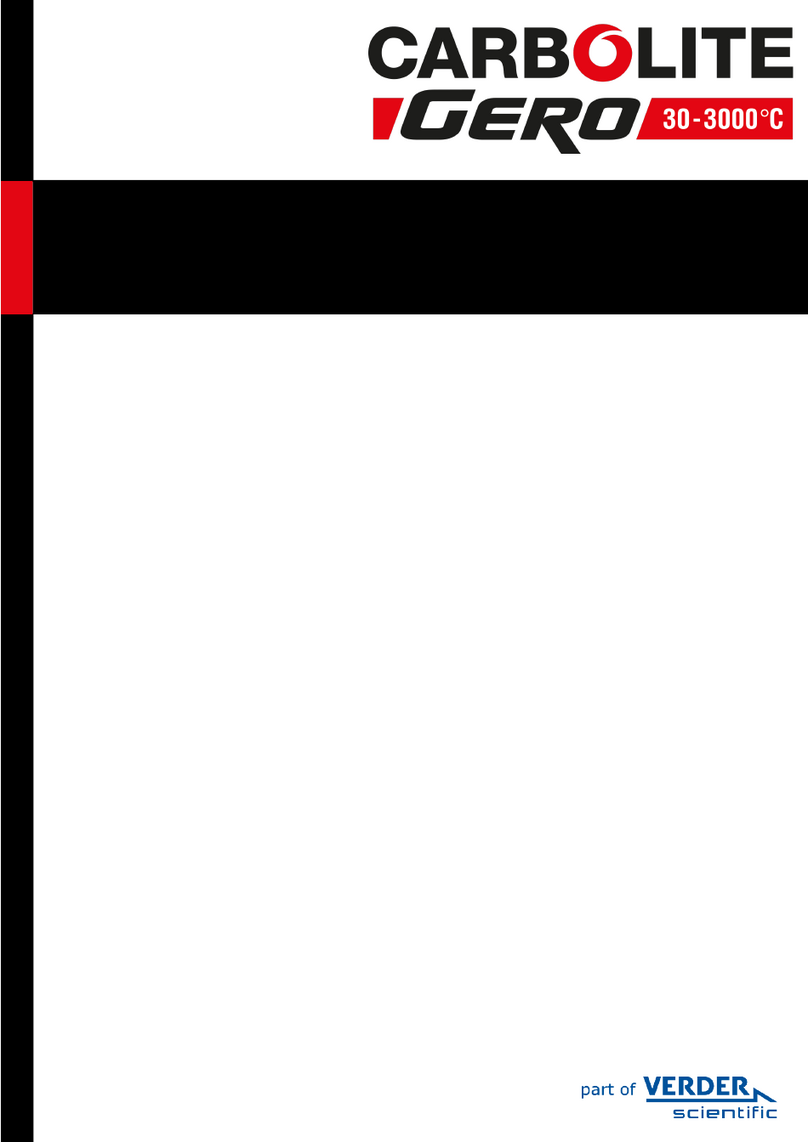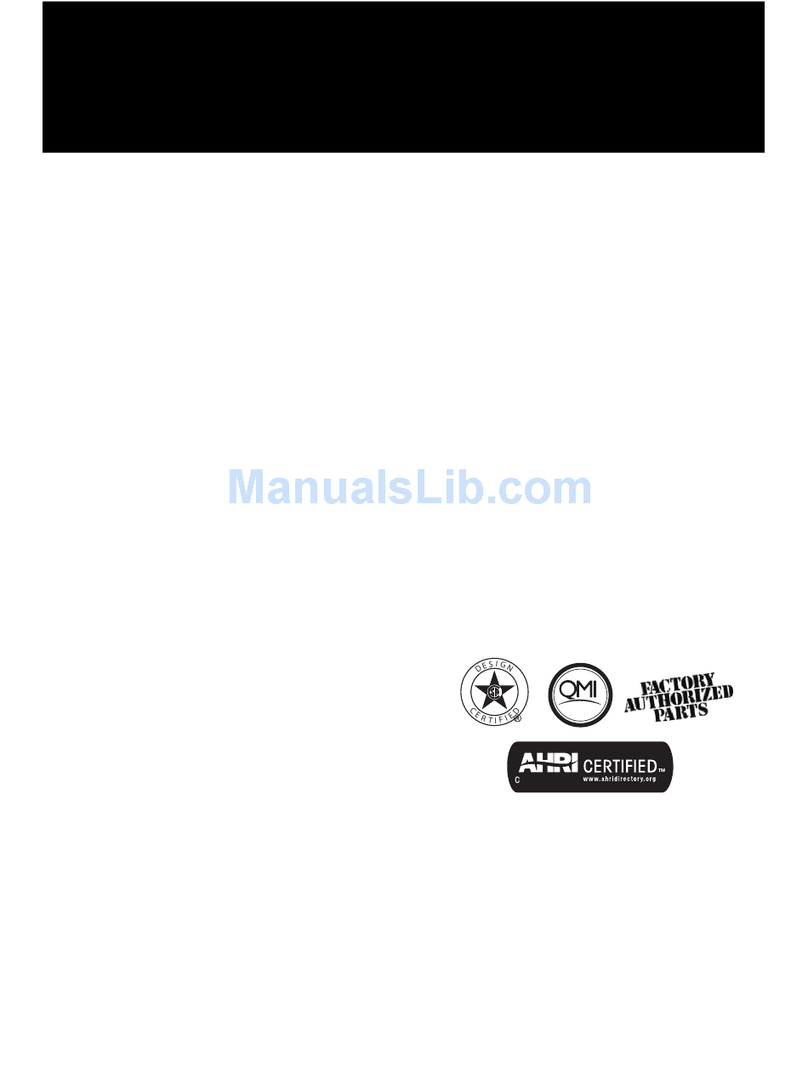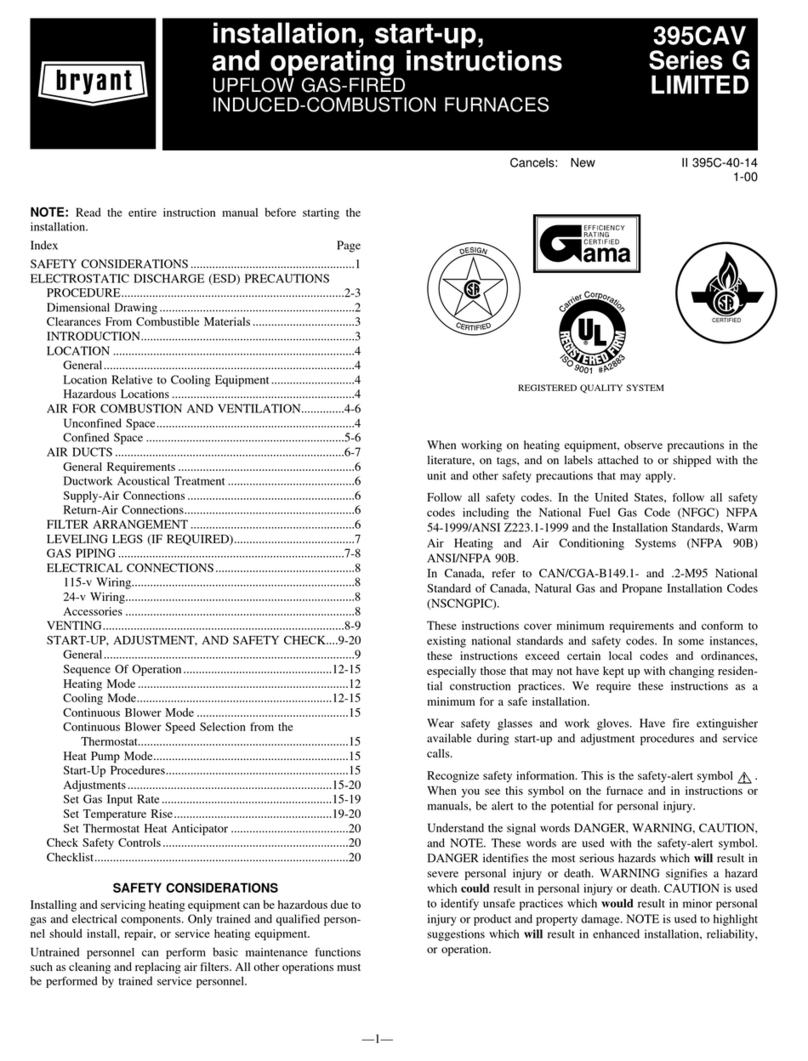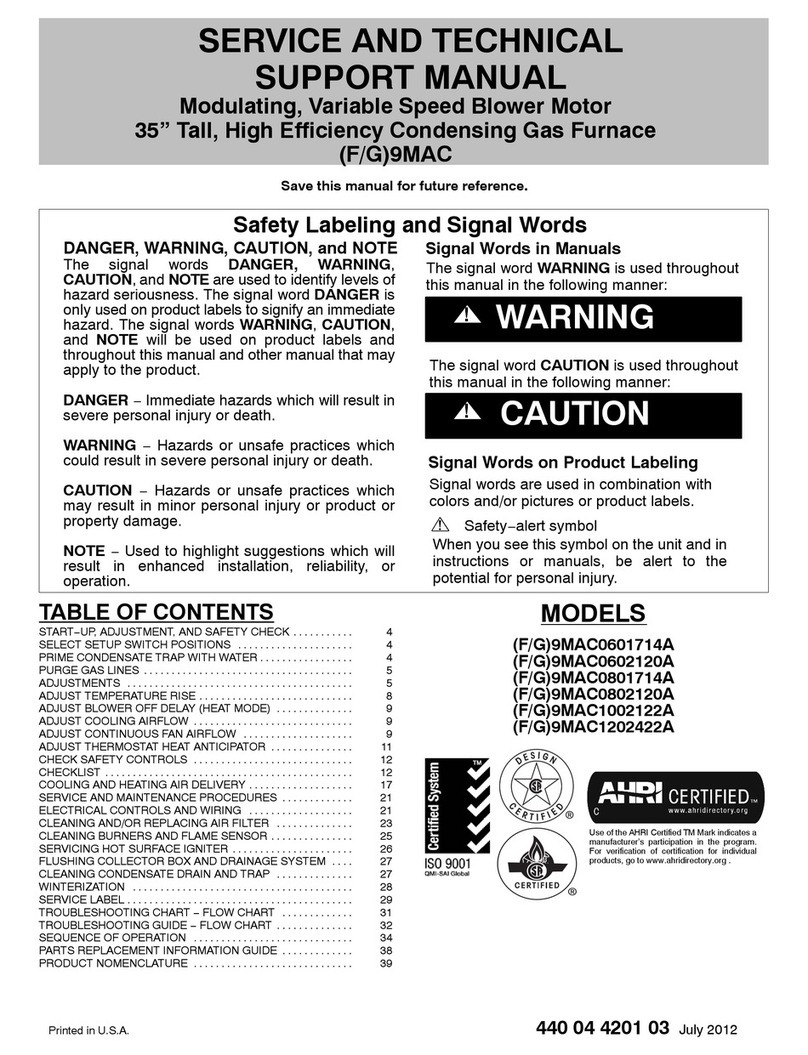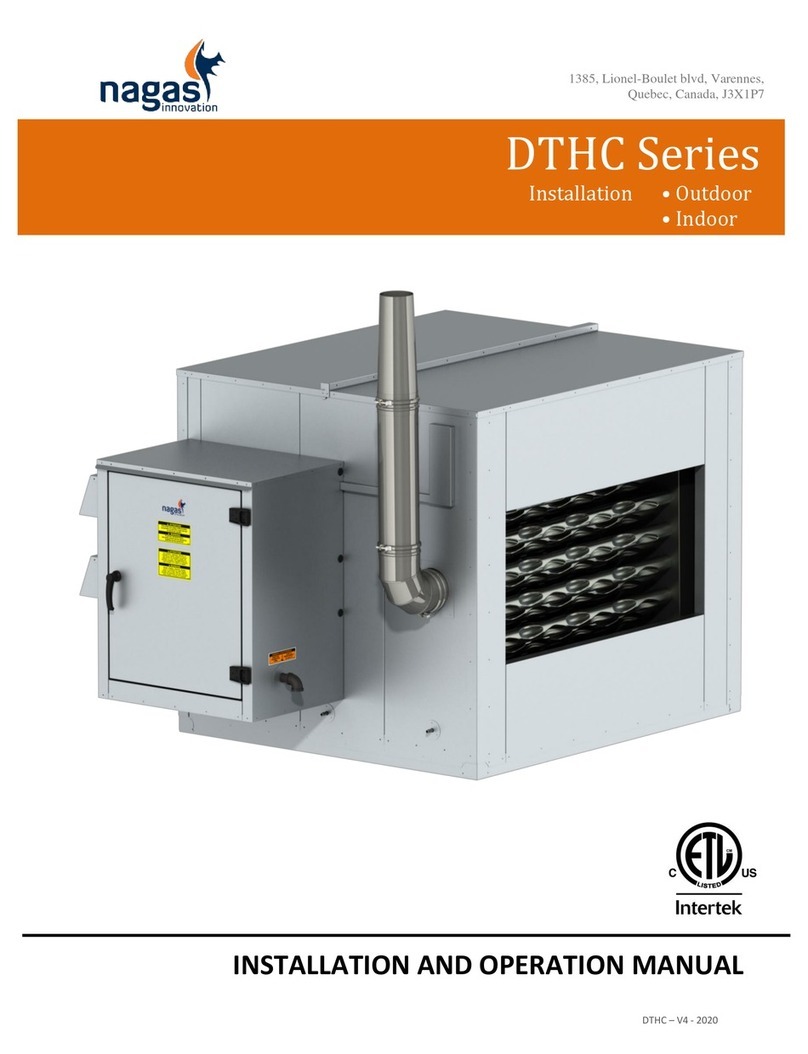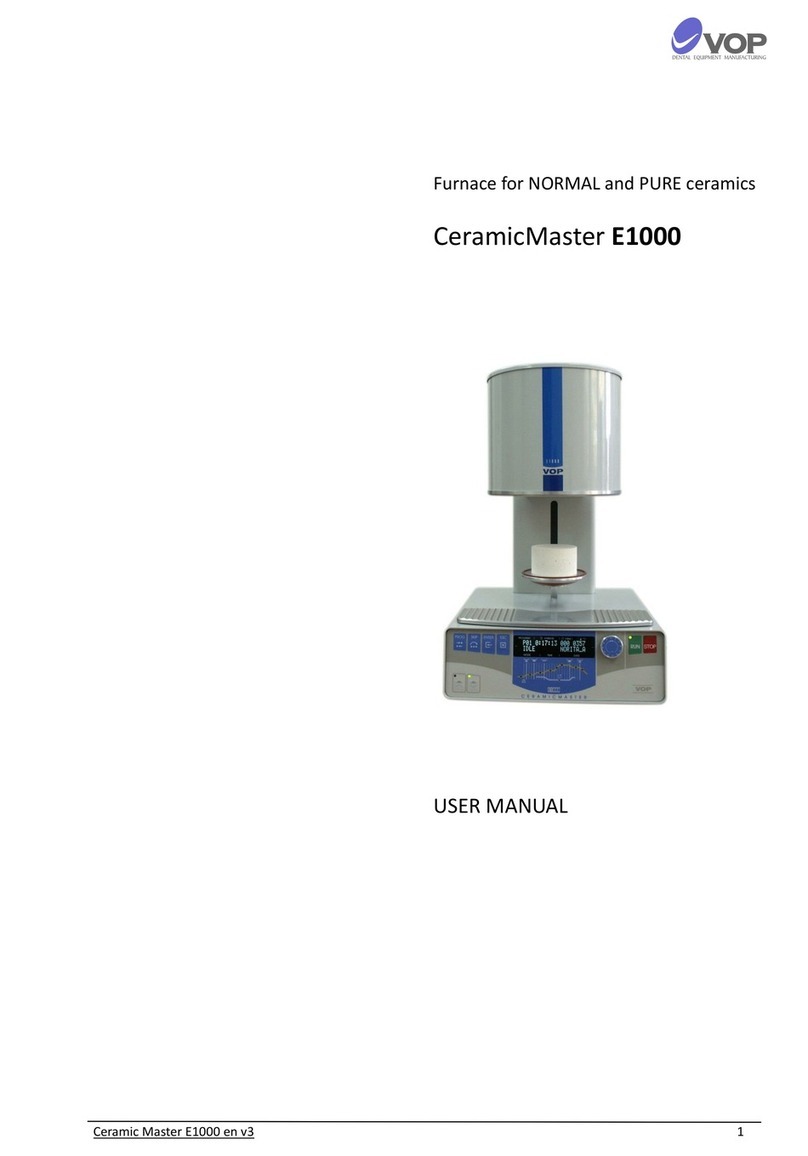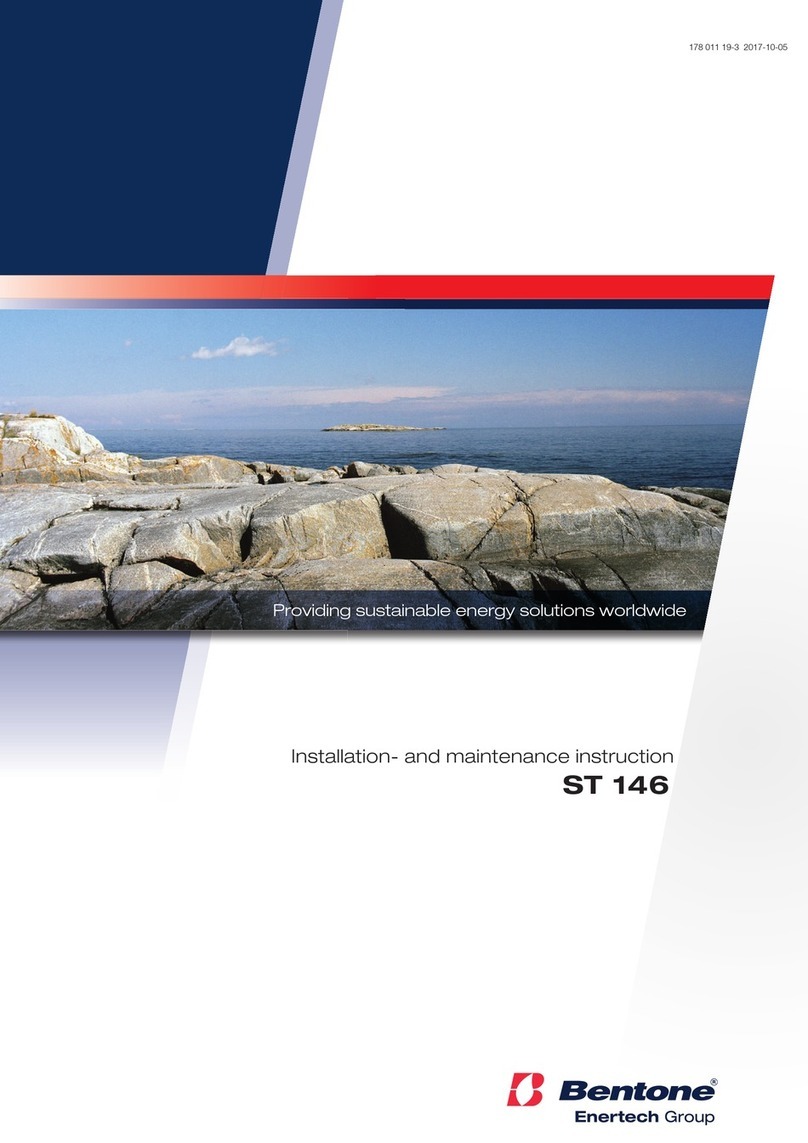
W:\ELECTRICAL\INSTRUCT\FURNACE\FURNACE GENERAL INSTRUCTIONS 2011.DOC 9 of 36 01/2014
3-4.5 Some furnaces are equipped with an exhaust outlet. This outlet must be vented by
an exhaust flue to an exhaust stack for discharge to an outside location, in
accordance with local codes and requirements. Do not connect exhaust outlet
directly to exhaust stack. Exhaust gas temperature is the same as internal furnace
temperature. Reduce exhaust temperatures by diluting with room air before
ducting to the outside. Caution must be taken to protect combustible building
materials from coming in contact with the hot exhaust stack.
3-4.6 The minimum safe exhaust rate must be confirmed for furnaces equipped with a
powered forced exhauster to handle flammable solvent vapors or products of
combustion from fuel fired equipment. The exhaust rate has been set at the factory
and dampers cut off and screwed in place or in some other manner limited to
prevent exhaust rate from being reduced below safe minimum exhaust rate.
After installation, this exhaust rate must be confirmed. This must be done at the
outlet of the stack from the building. The exhaust rate must meet or exceed the
minimum rate indicated on the Safety Design Form located on the side of the
furnace. If it is necessary to open the exhaust damper to increase the exhaust rate,
it must be cutoff or locked in position to prevent accidental closing.
Exhaust rate must be checked again if any changes are made to ventilation
system, duct work or building ventilation. Adding additional equipment, which
requires ventilation, to the building will require additional make-up air to the building
to prevent the building from operating under negative pressure. Operating building
under negative pressure will reduce exhaust rate from furnace to below safe
minimum exhaust rate.
Fuel fired furnaces without powered forced exhauster must have unrestricted
negative pressure (room not under negative pressure) stack to remove products of
combustion from work area.
3-4.7 For additional ventilation information, refer to NFPA 31 AStandard for the
Installation of Oil-Burning Equipment@, NFPA 54 ANational Fuel Gas Code@ and
NFPA 91 AStandard for Exhaust systems for Air Conveying of Vapors, Gases,
Mists and Noncombustible Particulate Solids@ (see Appendix B).
3-5 EXHAUST DUCTWORK
3-5.1 Wherever furnace ducts or stacks pass through combustible walls, floors, or roof,
either non-combustible insulation or clearance, or both, shall be provided to prevent
combustible surface temperatures from exceeding 160°F (72EC).
3-5.2 Where ducts pass through non-combustible walls, floors or partitions, the space
around the duct shall be sealed with non-combustible material to maintain the fire
rating of the barrier. Ducts that pass through fire walls should be avoided. Local,
city and state codes may apply to duct installation.
3-5.3 Exhausts systems should be installed in accordance with Chapter 1, 2 and 3 of
NFPA 91 AStandard for Exhaust Systems for Air Conveying of Vapors, Gases,
Mists, and Noncombustible Particulate Solids@ (see Appendix B).
3-5.4 Ducts shall be constructed entirely of sheet steel or other non-combustible material
capable of meeting the intended installation and conditions of service. The
installation shall be of adequate strength and rigidity and shall be protected where
subject to physical damage.




















